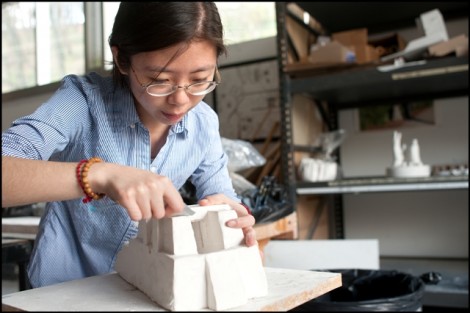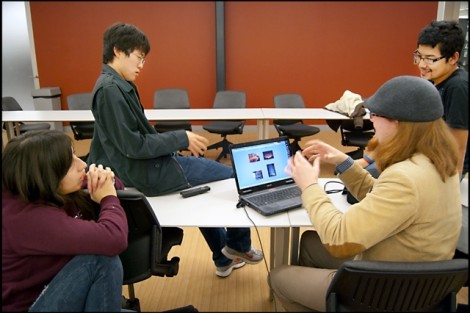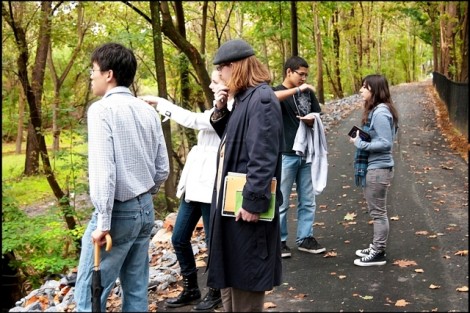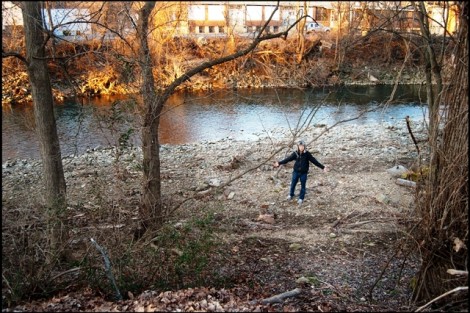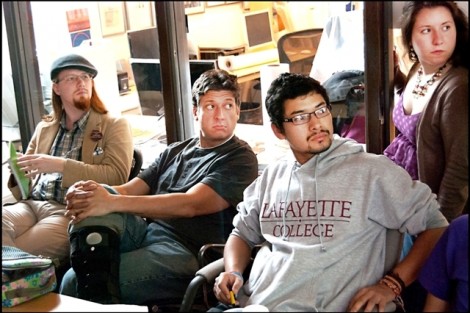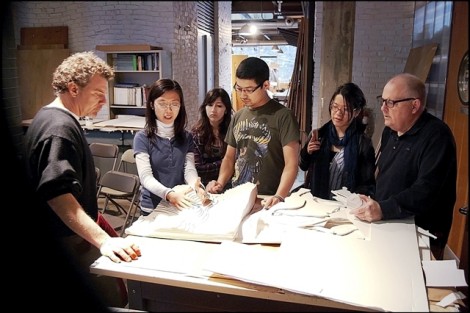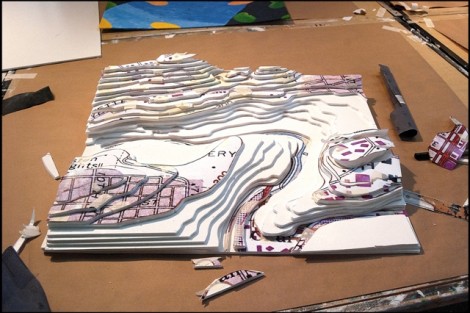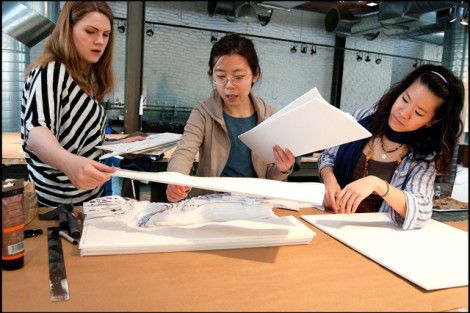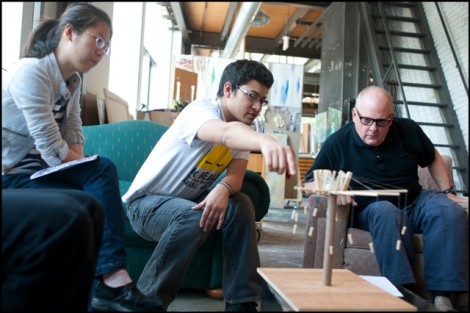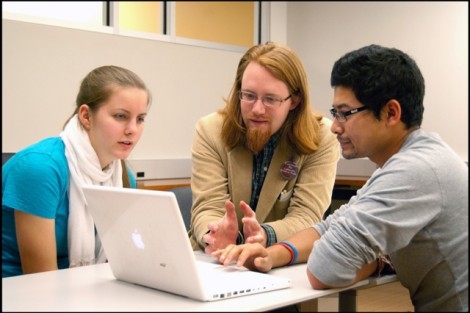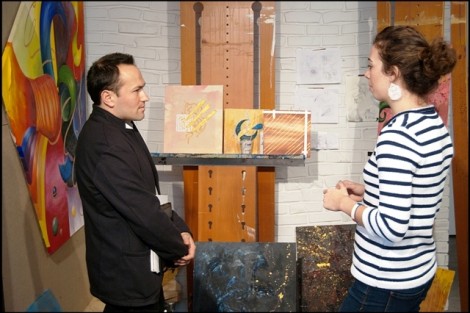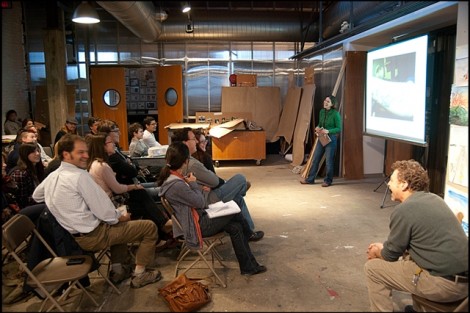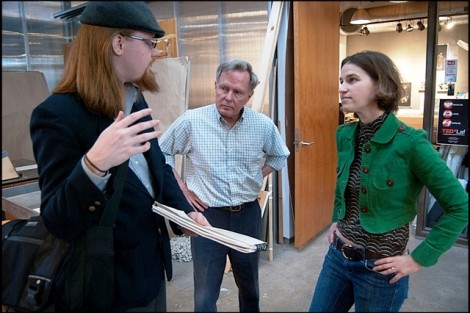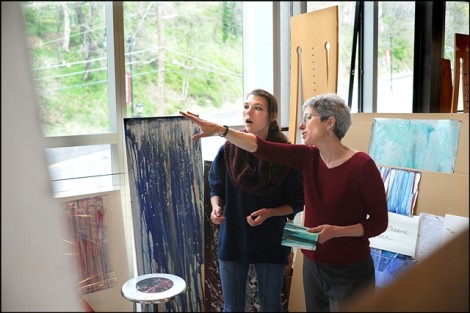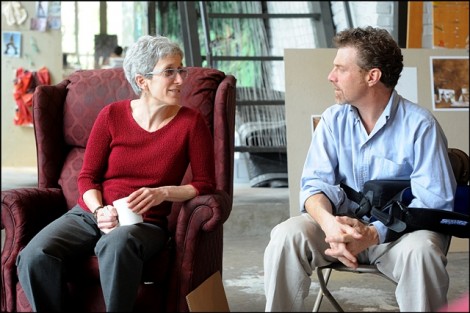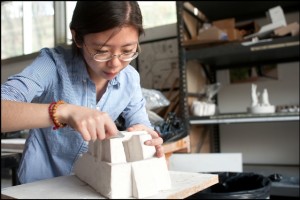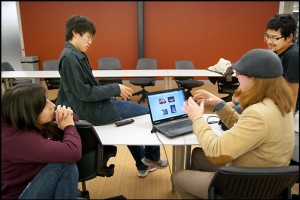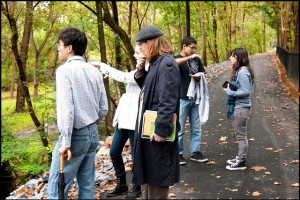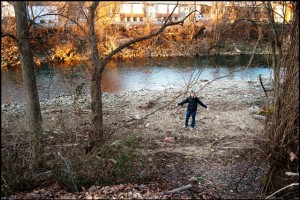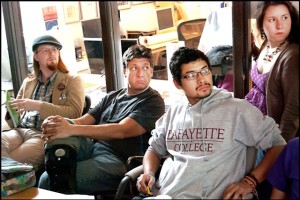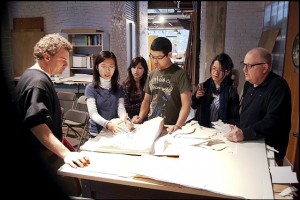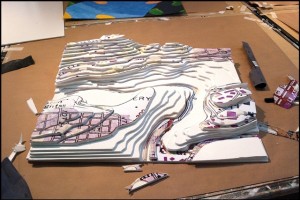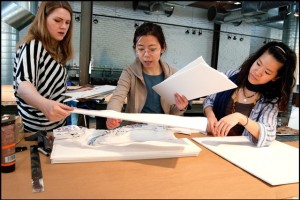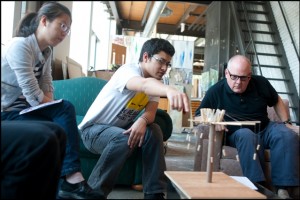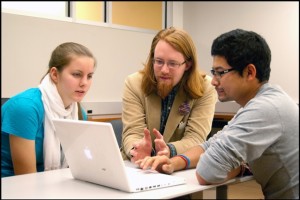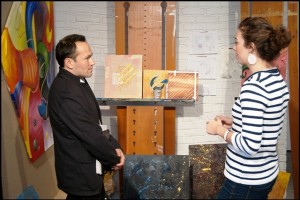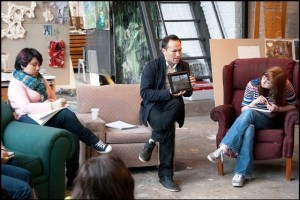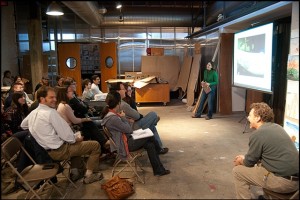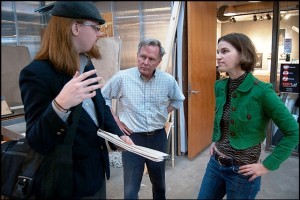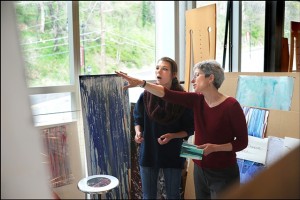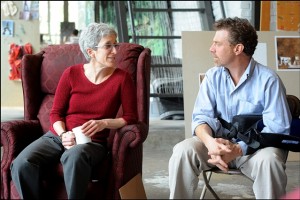When Easton residents walk down the Karl Stirner Arts Trail—a mile-and-a-half stretch along the Bushkill Creek connecting the Williams Arts Campus on North Third Street to the proposed Silk Mill arts community on 13th Street—they’ll see a unique sculpture designed by a diverse team of Lafayette students.
As Ed Kerns, Klapp Professor of Art, says, “Students love real projects.” And through the support of the College’s Mellon Foundation grant, a team of nine students got to sink their teeth into a sculpture that required engineering, artistic, and environmental know-how. They spent about a year designing a miniature clay ziggurat to be located on the floodplains of the arts trail.
View and share more images of the project on Flickr
They chose the ziggurat as a monument to the ancient Mesopotamian culture and its close relationship with waterways and rivers. About 13 feet in length, it will slowly erode from contact with the water and wind to reveal another sculpture inside, which will be a monument to the ziggurat that disappears. When the students return to campus this fall, they will build the actual sculpture out of mud bricks to be installed on the trail.
Art and mechanical engineering double major Ritesh Maharjan ’13 (Katmandu, Nepal) is the team leader. He is joined by civil engineering majors Se Hyung “Daniel” Kim ’13 (Willow Grove, Pa.) and Sarah Hardy ’14 (Rowley, Mass.), art and engineering studies double major Christa Martinez ’13 (Houston, Texas), self-designed architecture major Xinyi “Sandy” Ma ’13 (Nanjing, China), recent art graduates Imogen Cain ’12 and Sam Strong ’12, Katie Panto ’12, who graduated with a self-designed major of media and communication, and Kayo Yamada ’12, who graduated with a self-designed major of computer science and art.
In addition to Kerns, the team was advised by Nestor Gil, assistant professor of art, Jim Toia, director of the community arts program, and David Brandes and David Veshosky, associate professors of civil and environmental engineering. Dru Germanoski, Van Artsdalen Professor and head of geology and environmental geosciences, is in charge of the Mellon Grant at Lafayette and first approached Kerns about assembling an artistic team, allocating about $40,000 for the project.
“This was an opportunity to design and install a major piece of public art and what more can an art student want,” says Maharjan. “It brings together students from various disciplines, which is something Lafayette has always pushed as an invaluable skill in the modern world.”
The ziggurat’s disappearing act is a comment on the interplay between human development and the environment, says Kim, who was the team’s structural designer and environmental consultant. He designed the foundation and the inside sculpture to withstand the floods. Along with Hardy and Ma, he chose a trail location that will cause the least disturbance to the local ecosystem.
Kerns explains that the ziggurat is art as social practice at its best, the idea of art that engages with issues of the day—sustainability, the environment, politics, etc.
“The students learned that when you work with the natural environment, there is no longer any such thing as a value-free question,” he says. “It impacts something or someone. Ethics, morality, behavior, and balancing the needs of the land all play a role.”
In addition to faculty, the students were mentored by three professional artists, who also designed individual proposals for the trail. Nancy Cohen, William Lamson, and Lauren Rosenthal consulted with the student team, helping them push their boundaries and explore all possibilities in their design.
Like Maharjan, Kim enjoys the opportunity to blend engineering and art. He says working with such a multidisciplinary team made him see his own major in a whole new light.
“Who would have thought that I would be working with artists during my time at Lafayette as an engineering student,” he says. “But this got me out of my civil engineering bubble, and I faced new challenges with people who have a different background and different mindset. Art can be anything—drawing, singing, cooking, etc. After this project, I realized it can refer to engineering as well. The sculpture itself represents the idea of human interactivity with the environment through the erosion of one sculpture and the permanence of another. It’s so powerful.”
The campus and local communities will be able to see the student team’s proposal as well as those of each visiting professional artist in an exhibit at the Grossman Gallery this fall. Kerns hopes the exhibit will attract donors who will help turn the artists’ proposals into reality. The Mellon Grant will support the building of the student proposal.
